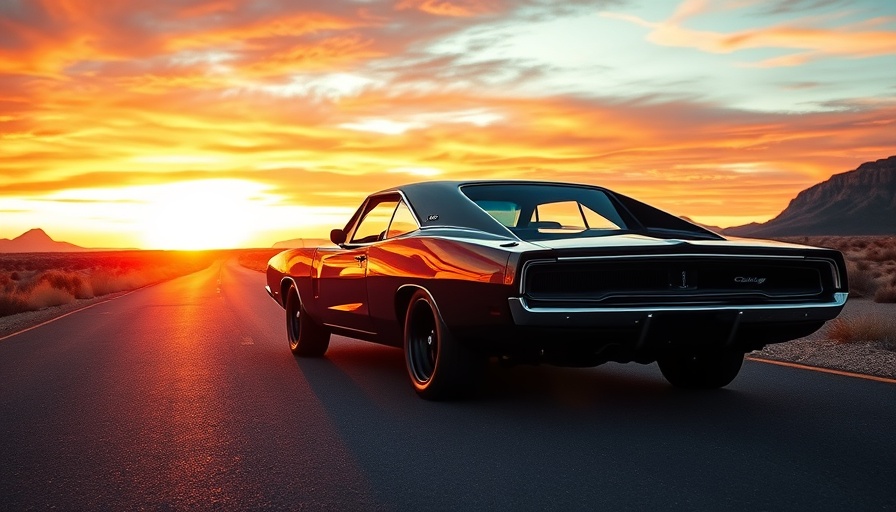
Introduction to the 2024 Toyota GR Corolla
The 2024 Toyota GR Corolla is more than just a car; it's a testament to Toyota's commitment to performance and emerging styles within the automotive world. In the recent episode of Jay Leno's Garage, car aficionado Jay Leno takes the wheel of this exciting vehicle, showcasing its rally-inspired design and extraordinary driving capabilities. With advanced technology, sharp handling, and a thrilling engine, the GR Corolla aims to capture the hearts of car enthusiasts and everyday drivers alike.
In Jay Leno Drives the 2024 Toyota GR Corolla — Rally Rocket for the Streets!, the discussion dives into the car's performance and maintenance, exploring key insights that sparked deeper analysis on our end.
What Makes the GR Corolla Stand Out?
The Toyota GR Corolla, part of the GR family—a nod to Toyota's motorsport heritage—brings forth features that are specifically crafted for performance. Equipped with a powerful 1.6-liter turbocharged engine that churns out an impressive 300 horsepower, this compact car dons an aggressive yet sleek exterior designed for aerodynamics.
But the GR Corolla is not just about looks. As Leno explores in his video, the car's all-wheel-drive system, paired with a six-speed manual transmission, allows for responsive maneuvering in various driving conditions, especially in an urban setting. It's a perfect blend of practicality and exuberance that speaks to both everyday commuters and weekend racers.
Basic Car Maintenance: Keeping Your GR Corolla in Top Shape
While the thrill of driving the GR Corolla is evident, it's essential to remember the importance of regular car maintenance. Proper upkeep not only enhances the vehicle's performance but also extends its life. Here are some vital car maintenance tips every owner should follow:
1. Regular Oil Change Tips
Changing engine oil is fundamental for the smooth functioning of any vehicle. For the GR Corolla, adhere to a regular oil change schedule, ideally every 5,000 to 7,500 miles, depending on your driving habits. Always opt for high-quality oil that meets Toyota specifications to ensure optimal performance and longevity.
2. How to Check Car Fluids
Fluids are the lifeblood of your vehicle. Regularly checking engine oil, coolant, brake fluid, and transmission fluid levels can prevent larger issues down the road. Keep a maintenance checklist handy to remind yourself of these checks.
3. Tire Rotation Tips
Tire maintenance is crucial for safety and performance. Rotate your tires every 5,000 to 7,000 miles to ensure even wear. Maintaining proper tire pressure can significantly enhance fuel efficiency and grip on the road—for an exhilarating driving experience like that of the GR Corolla.
Understanding Performance Features
The 2024 Toyota GR Corolla not only impresses with its performance but also incorporates advanced technological features aimed at enhancing driver control. Applications that provide real-time data about tire pressure, fluid levels, even a built-in maintenance schedule, are some innovative aspects of modern vehicle design. Utilizing the best car maintenance apps can aid drivers in staying on top of their vehicle’s needs seamlessly.
Beyond Performance: Why Maintenance Matters
Owning a sporty vehicle like the GR Corolla comes with the responsibility of understanding how to care for it. Car care tips go beyond just performance; they can save you money by reducing potential repairs due to neglect. A dedicated auto maintenance schedule instills good habits and keeps your car in its best condition, ensuring that every ride is as thrilling as the first.
Future Predictions: The Evolution of Compact Sports Cars
As automotive technology continues to evolve, the future of compact sports cars looks promising. Electric and hybrid technologies are on the rise, pushing manufacturers to innovate further. The way the GR Corolla has embraced performance while considering efficiency sets a benchmark that may influence future models. Consumers can expect future iterations of performance cars to fuse agility with sustainability.
Conclusion: Your Takeaway from the GR Corolla Experience
Driving the 2024 Toyota GR Corolla is an exhilarating experience, and understanding how to take care of it is equally important. From basic car maintenance to utilizing technology for optimal vehicle management, there is much to gain. As we keep an eye on the automotive industry, the GR Corolla stands as a symbol of how performance meets practicality. Whether you're a hardcore enthusiast or a casual driver, ensuring your vehicle is well-maintained will enhance your overall driving experience.
 Add Row
Add Row  Add
Add 




Write A Comment